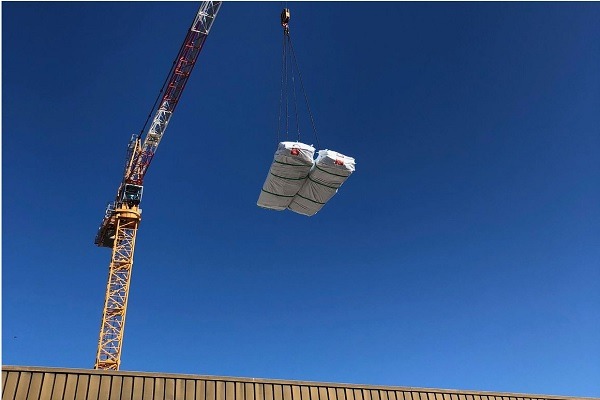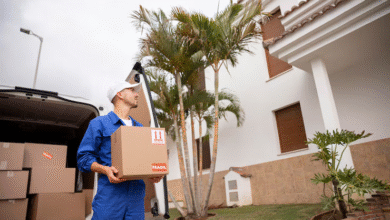Asbestos Roof Removal In Sydney

Maintaining the roof of a commercial building is crucial to ensure the safety, efficiency, and longevity of your business operations. Here are some actionable tips to help business owners keep their commercial roofs in top condition:
Conduct Regular Inspections
Schedule bi-annual inspections with a professional roofing contractor to identify and address potential issues early. Look for signs of damage such as cracks, leaks, or worn-out areas.
Clean Gutters and Drains
Ensure that gutters and drains are free of debris to prevent water accumulation. Regular cleaning, especially after heavy storms, can prevent water damage and leaks.
Trim Overhanging Tree Branches
Trees can pose a risk to your roof. Trim overhanging branches to prevent them from falling onto the roof during storms and to reduce the accumulation of leaves and debris.
Monitor Roof Load
Be mindful of the weight your roof is supporting. Remove any unnecessary equipment and regularly check for water or snow accumulation that can exceed the roof’s load-bearing capacity.
Repair Damage Promptly
If damage is detected, act quickly to repair it. Delaying repairs can lead to more extensive damage and higher repair costs.
Invest in Preventative Maintenance
Consider a preventative maintenance program with a trusted roofing contractor. Regular maintenance can extend the life of your roof and prevent costly disruptions.
Educate Your Staff
Make sure your staff knows the importance of roof maintenance and whom to contact if they notice any issues.
Embrace Energy Efficiency
Upgrading to energy-efficient roofing materials can significantly reduce heating and cooling costs. Consider materials with high reflective properties to keep the building cooler.
Schedule Professional Assessments
Have a certified roofer conduct thorough assessments to check for structural integrity and insulation quality. This can help in identifying areas that need improvement.
Understand Your Roof’s Lifecycle
Every roofing material has a lifespan. Knowing this can help you plan for replacements and avoid unexpected failures.
Understand hazards such as Asbestos
Asbestos roof removal is a critical process that requires meticulous planning and strict adherence to safety protocols. Once a common material used for its durability and fire-resistant properties, asbestos is now known for its health risks, particularly when its fibers become airborne.
The removal process begins with a thorough inspection by certified professionals who assess the condition of the roofing and the presence of asbestos. This is followed by the creation of a sealed containment area to prevent contamination.
Equipped with protective gear, the trained workers carefully dismantle the asbestos-containing materials, ensuring that the fibers are not disturbed. The waste is then securely bagged and transported to designated disposal facilities.
Throughout the operation, air quality is continuously monitored to protect both the workers and the environment. The successful completion of asbestos roof removal not only eliminates a significant health hazard but also paves the way for the installation of safer, modern roofing materials.
Keep Records of Maintenance
Maintain a log of all inspections, repairs, and maintenance activities. This documentation can be invaluable for warranty claims and resale purposes.
Plan for the Unexpected
Set aside a budget for emergency repairs. Quick access to funds can be crucial in addressing unexpected issues promptly.
By implementing these additional tips, business owners can further safeguard their commercial properties and ensure that their roofing systems are reliable, efficient, and long-lasting. Remember, a well-maintained roof is not just about avoiding problems; it’s about investing in the future of your business.
Frequently Asked Questions (FAQ)
Q: How often should a commercial roof be replaced?
A: The frequency of roof replacement depends on several factors, including the type of roofing material, the quality of installation, and environmental conditions. On average, a commercial roof can last between 15 to 30 years.
Q: Can I perform roof maintenance tasks myself?
A: While some minor tasks like clearing debris can be done by yourself, it’s best to hire professionals for most maintenance work to ensure safety and proper handling.
Q: What should I do if I notice a leak in my commercial roof?
A: If you notice a leak, you should contact a professional roofing contractor immediately to assess and repair the damage to prevent further issues.
Q: Are there any signs that my roof needs immediate attention?
A: Yes, signs such as water stains on ceilings, mold growth, or a noticeable dip in the roof surface are indicators that your roof needs immediate attention.
Q: How can I ensure the contractor I choose is qualified?
A: Look for contractors with proper licensing, good reviews, and references. Also, ensure they have experience with commercial roofing and offer a solid warranty.




